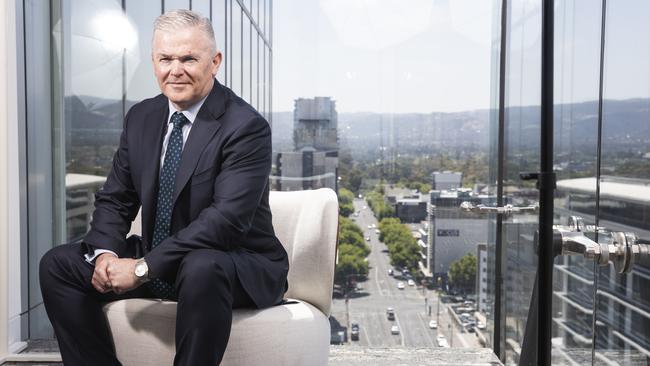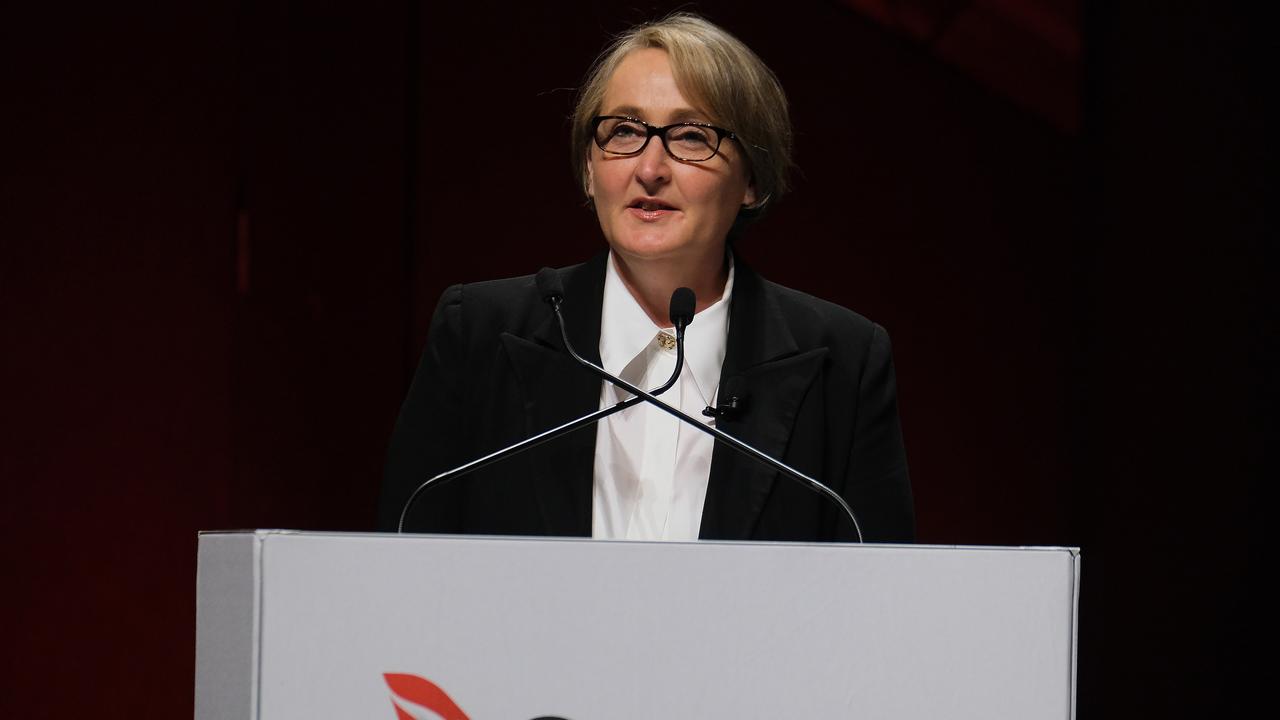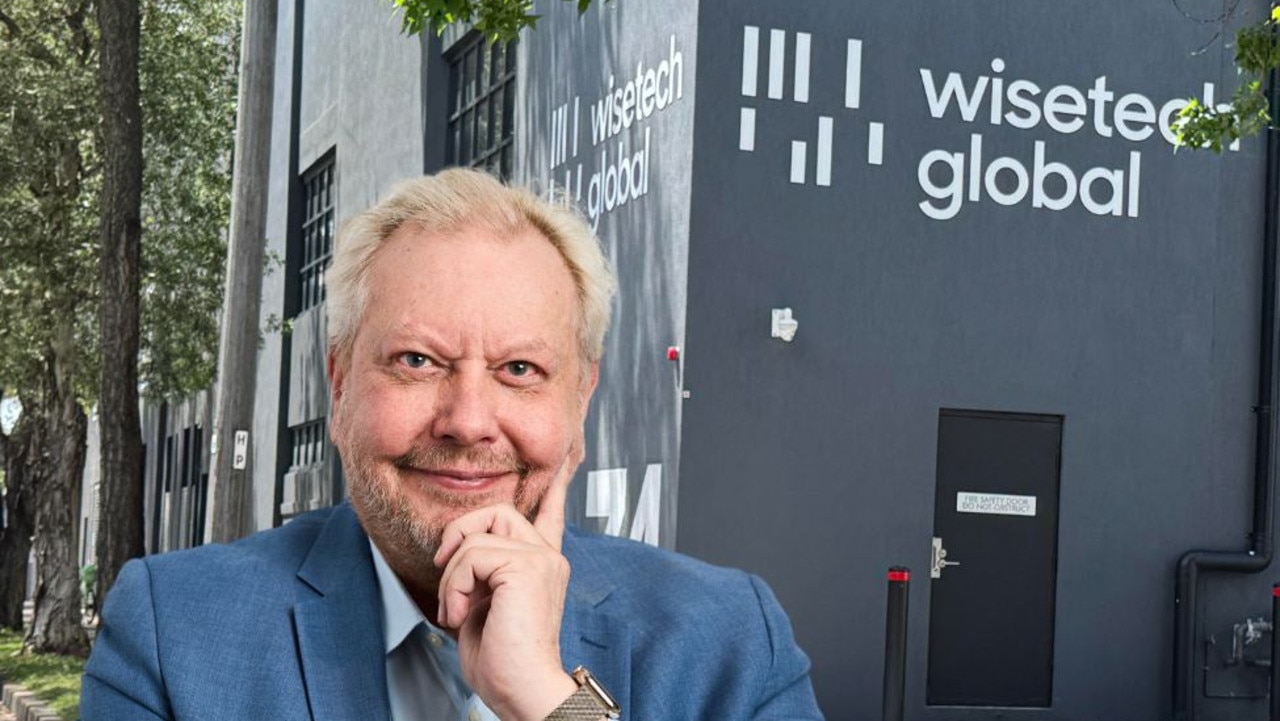Santos has grown from an idea into a global company worth billions
The longest serving premier of South Australia, Thomas Playford, would sit and watch the gas flare at Santos’s first well, envisaging the opportunities it would create for the state.

Business
Don't miss out on the headlines from Business. Followed categories will be added to My News.
Former South Australian premier Tom Playford - the longest serving political leader in Australian history who was also credited with spurring the state’s industrial transformation - would sit on an apple box from his family’s Adelaide Hills orchards, and just watch the gas flare burn over Santos’s first ever discovery in the Cooper Basin.
The Gidgealpa-2 well had struck gas on New Year’s Eve 1963, at 6.20am in the morning.
This followed eight dry holes and 23.5km of drilling.
While Santos - initially South Australia Northern Territory Oil Search - had been constituted back in April, 1954, this was the company’s and the state’s first commercial hydrocarbon discovery.
Author Kristin Weidenbach’s definitive history of the company, Blue Flames, Black Gold: The Story of Santos, documents driller Ted Skove reminiscing about Playford’s visit in the early months of 1964.
“I remember Playford, because he was that keen, and spent a lot of time just sitting watching it,’’ Mr Skove said.
“Not saying very much. He’d sit there and watch the flare line burn.’’

Weidenbach’s history makes the claim - correctly - that the Gidgealpa discovery changed the course of the South Australian economy forever, and the gas field, near the famed Cooper Creek, “could rightly be identified as the cradle of modern industry in this state’’.
“Gidgealpa also helped create the Santos we know today and proved the starting point for the development of one of the world’s largest natural gas resources, the Cooper Basin, a foundation on which the state could build a future without relying on dirty ‘manufactured’ gas for supply to homes and businesses.
“When the Premier’s party returned to Adelaide via charter plane on February 16, they brought a longneck beer bottle filled with Gidgealpa-2 condensate – a kind of light crude oil resembling petrol – which Playford proudly displayed for the press.’’
The birth of Santos, nine or so years previously, had pure “old-Adelaide” establishment roots.
Founding directors included John Bonython, grandson to Sir Langdon Bonython, former editor and owner of The Advertiser, and the son of Sir John Bonython, former Lord Mayor of Adelaide and also a journalist and director at The Advertiser.

Geologist and Antarctic explorer Douglas Mawson was also a director, as were major general George Symes and Henry Newland.
Santos went on to discover the Moomba gas field in 1966, and by 1969 Santos was piping gas to Adelaide homes and businesses, via the then-$40m Moomba gas pipeline, and unlocking decades of prosperity for the state.
The pipeline also delivered Santos its first substantial revenue.
Embedded deeply into the Adelaide corporate and economic bedrock as it is, Santos has also been a source of parochial pride for South Australians.
In 1979, in a bid to head off a bid from corporate raider Alan Bond, the state government put in place a 15 per cent shareholder cap to thwart any potential takeover. This cap would remain in place until lifted by the Rann Labor Government in 2007.
The company’s international ambitions have waxed and waned over the years, with forays into Asia abandoned 15 or so years ago as the company focused on building its massive liquefied natural gas facilities in Queensland and the Northern Territory.
Disasters have also struck from time to time.

On January 2, 2004 there was an explosion at the company’s Moomba gas plant, which took hours to get under control and forced the state government to order about 50 of the state’s largest industrial customers to shut down.
It was also an investor, although not the operator, in a drilling program in Sidoarjo, Indonesia, which caused a massive mud “volcano’’, which displaced thousands of people and caused years of anguish.
The company’s fortunes have also waxed and waned, and with that have come takeover approaches.
The shares were trading higher than $18 back in 2008, but the oil price shock in 2014 dashed any hopes it would stay anywhere near those heights for years to come, and triggered massive cost cutting efforts eventually under current managing director Kevin Gallagher, who took on the top job in 2016 and immediately starting swinging the axe.
In 2015 the company rejected a $7.1bn hostile takeover from Bermuda-based Scepter Partners, which was backed by middle eastern money and led by former chief executive John Ellice-Flint.
That was a fairly weak tilt, and was seen off quickly.
The shares had dropped below $3 by the time Gallagher arrived, and well over 1000 staff soon found themselves looking for work as efficiency became the order of the day.
Over time, Gallagher’s approach was vindicated, with the company getting its massive debt pile, accrued largely in the construction of the Gladstone LNG facility, under control well before its own forecast deadline.
The company rejected a $4.50 per share bid from US-based Harbour Energy in August 2017, and later agreed to talk seriously with Harbour when the bid was upped to $6.50 per share.
Santos ultimately rejected the Harbour bid in May 2018, and the US firm slunk off, unsuccessful.
Gallagher, who in the early cost-cutting years was no friend of the press, has become an outspoken advocate for the oil and gas industry in recent years, talking up its importance in the energy transition, its carbon capture credentials, and the forward looking potential for manufactured hydrogen.
He has also been a sharp critic of government policies such as intervention in the domestic gas market.
Gallagher also, perhaps ironically given current machinations, signed on to a new remuneration deal in 2021 which would see him earn another $6m incentive on top of his existing pay, if he hit certain performance milestones.
It was widely understood that that payment was designed to stop him throwing his name in the mix for the chief executive role at Woodside Energy - a job which was coming up at the time.
One of Gallagher’s, and the company’s, key successes in recent years was the merger with Oil Search in 2021, which elevated Santos into the ASX 20, and gave it the financial firepower to develop and compete for large assets, but also over time, to fund the investments which will be needed to be a player in the energy markets of the future.
Ironically, it is this very quest - and necessity for size - which now could see Santos wink out of existence forever.
More Coverage
Originally published as Santos has grown from an idea into a global company worth billions





